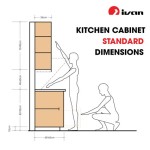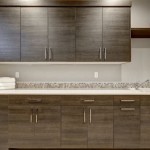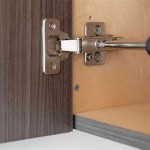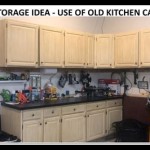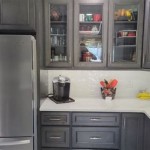Best Type of Paint for Kitchen Cupboards
When it comes to revamping your kitchen, painting your cabinets is a cost-effective and impactful solution. Choosing the right paint can make a world of difference in the final look and durability of your cabinets. This article explores the best types of paint for kitchen cabinets, focusing on their pros, cons, and suitability for various needs.
1. Acrylic Latex Paint
Acrylic latex paint is a popular choice for kitchen cabinets due to its versatility and ease of use. It boasts a water-based formula, making it low-odor, quick-drying, and easy to clean up. Its smooth finish provides a crisp look, and it is available in a vast array of colors.
Pros:
- Easy application: Acrylic latex paint applies smoothly and dries quickly, making it suitable for both brush and roller application.
- Low VOCs: Water-based paints are considered eco-friendly and have low levels of volatile organic compounds (VOCs), reducing indoor air pollution.
- Durable: Acrylic latex paint offers good durability and is resistant to scuffs and scratches, making it suitable for high-traffic areas like kitchens.
- Easy to clean: Acrylic latex paint is washable and can withstand cleaning agents without degrading.
Cons:
- Less durable than oil-based: While acrylic latex is durable, it may not be as resistant to moisture and heat as oil-based paint.
- Limited adhesion: Acrylic latex paint may not adhere as well to surfaces with high gloss or oil-based finishes, requiring proper preparation.
Best for:
Acrylic latex paint is excellent for most kitchen cabinets, especially if you are looking for a low-VOC, easy-to-apply option with a smooth, durable finish. It works well on both new and previously painted cabinets.2. Oil-Based Alkyd Paint
Oil-based alkyd paint has been a staple for kitchen cabinets for years. Its durable, hard-wearing finish provides excellent protection against moisture, heat, and stains. While it has a strong odor and requires more preparation, it offers superior resistance to wear and tear, making it a viable option for high-use areas.
Pros:
- Excellent durability: Oil-based paint is known for its durability, resistance to moisture, and heat. It is also more resistant to chipping and scratches than acrylic latex paint.
- Self-leveling: Oil-based paint tends to self-level, resulting in a smooth, even finish.
Cons:
- Strong odor: Oil-based paint has a strong, lingering odor that requires ample ventilation during and after application.
- Long drying time: Oil-based paint takes longer to dry than acrylic latex paint, requiring patience between coats.
- Cleanup: Cleanup requires mineral spirits or paint thinner, which can be messy and hazardous.
- High VOCs: Oil-based paint emits higher levels of VOCs, contributing to indoor air pollution.
Best for:
Oil-based paint is ideal for cabinets that experience heavy use, moisture, or heat. It is also a suitable choice for cabinets that are prone to scratches or scuffs. For individuals seeking a truly durable finish, oil-based paint remains a reliable option, despite the drawbacks.3. Epoxy Paint
Epoxy paint is a two-part paint that consists of a resin and a hardener. Once mixed, it forms a strong, chemical-resistant coating. It is often used for high-performance applications due to its exceptional durability and resistance to moisture and chemicals.
Pros:
- Excellent durability: Epoxy paint forms a hard, non-porous surface that resists moisture, stains, and chemicals. It is very durable and can withstand heavy use.
- High gloss finish: Epoxy paint creates a smooth, glossy finish, providing a sleek and modern look.
Cons:
- Difficult application: Epoxy paint requires careful mixing and a timely application. It can be challenging to apply evenly and avoid bubbles or streaks.
- Limited color options: Epoxy paint is often available in standard colors and may have limited custom color options.
- Cleanup: Cleanup requires specialized solvents, which can be hazardous and require proper handling.
Best for:
Epoxy paint is ideal for cabinets that require a highly durable finish, like cabinets in commercial kitchens or areas with high moisture exposure. It is also a good option for kitchens where you want a glossy, sleek look. However, its complex application process and limited color options may not be suitable for all projects.Beyond the type of paint, the finish is another important consideration for kitchen cabinets. Glossy finishes are durable and easy to clean but can highlight imperfections. Matte finishes are more forgiving but may require more frequent cleaning. Semi-gloss finishes offer a good balance of durability and aesthetic appeal.
Ultimately, the best type of paint for your kitchen cabinets depends on your specific needs, budget, and desired finish. Consider factors such as durability, ease of application, color options, and overall style when choosing the best suited paint for your project.

How To Paint Kitchen Cabinets In 7 Simple Steps

Best Paint Color For Kitchen Cabinets

The Best Types Of Paint For Kitchen Cabinets Story Jenna Kate At Home

Best Paint For Kitchen Cabinets Solved Bob Vila

How To Paint Kitchen Cabinets Best Color Ideas Cost

The Best Type Of Paint For Kitchen Cabinets Shelfgenie

Best Paint For Cabinets Types Of Kitchen

How To Paint Kitchen Cabinets In 7 Simple Steps

The Best Type Of Paint For Kitchen Cabinets Shelfgenie

Kitchen Cupboard Paint How To Your Cupboards
Related Posts

